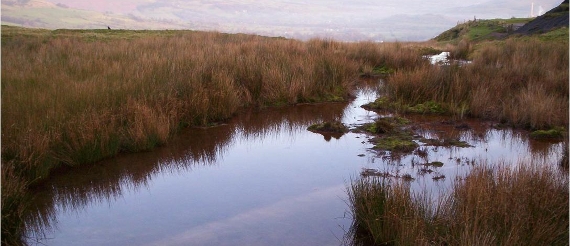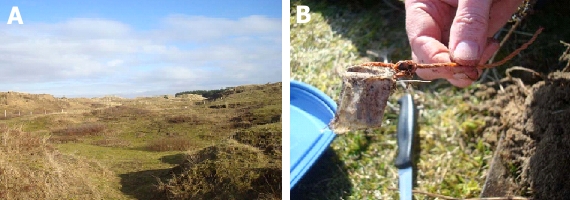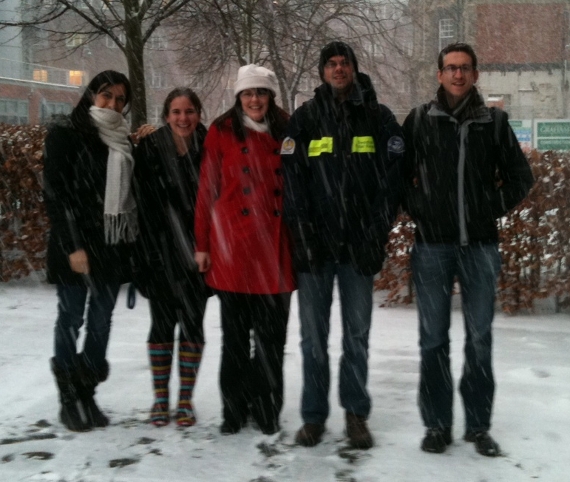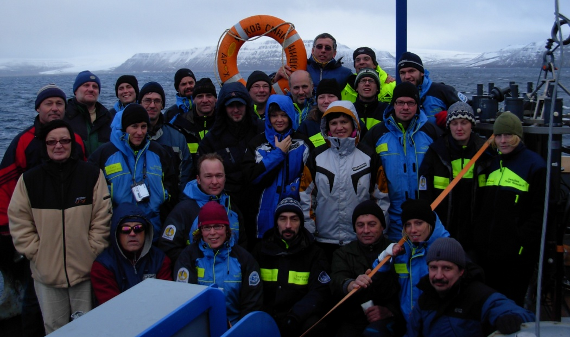The role of organics in elemental cycling/mobilization
Groundwater quality and soil properties are vital for a site characterisation. Our research is focused on the composition and the role of organic matter (OM) in processes related to other elements, such as Arsenic, Selenium, Cobalt and Nickel, taking place in diverse sites around the globe (e.g., South-East Asian countries, Ireland, UK and Mexico).
Arsenic:
Over a hundred million people across the globe are chronically exposed to high concentrations (>10 ppb) of the geogenic poison, As, in shallow reducing groundwaters utilised as drinking water. Drinking highly As contaminated groundwaters from aquifers caused skin, lung, bladder, liver and kidney cancers as well as skin lesions and a peripheral vascular disease known as the blackfoot disease (BFD), which is very unique to Taiwan (Ravenscroft et al., 2009).The detailed mechanisms by which As is mobilized into the waters of these aquifers is still a matter of debate. However, it is generally believed that microbes play a key role through the reductive dissolution of As-bearing Fe(III) hydrated oxides and/or the reduction of sorbed As(V). Electron donors such as organic matter (OM) are required to drive this process, yet As release rates are often poorly correlated to total OM. Past Manchester based research suggested that this may in part reflect the varying bioavailabilities of different types of OM (Rowland et al., 2009; van Dongen et al., 2008), the importance of other electron donors or the confounding influence of other, notably mineralogical or microbiological, processes.
The role and nature of OM in As mobilisation therefore remains rather unambiguous, perhaps in part due to the limited number of studies to date. An improvement in understanding of this link is required to better inform theories of long-term anthropogenically driven secular increases in groundwater As in these aquifers (Polya and Charlet 2009).
Our research focuses on identifying and characterizing the composition of OM in As rich aquifer sediments from Europe and Asia. The chosen sites provide opportunities to investigate the role that OM plays in As mobilisation in situ. In addition, obtained sediments will be used to determine the role of different types of OM under lab conditions.
 References
References
Acid mine drainage:
Toxicity and acidity of Acid Mine Drainage (AMD) affect human health and economic activities in diverse sites of the world. Acidic streams occur when pyrite and other sulphurous minerals are exposed to air and water action as result of natural or anthropogenic activity. In both cases sulphuric acid is produced and toxic minerals that may be content in the rock matrix (e.g. As, Pb) are released to the environment killing most of the aquatic life and contaminating the aquifer system. Governments and industries from different countries spend huge amounts of money due to this problem; as a representative example in 1998 in West Virginia (US) the mining industry spent $1 million a day to mitigate AMD (USGS, 1998).
The AMD cycle is a complex process in which different factors like climate, mineralogy, vegetation and microbial population are involved to. Several studies have shown the importance of microorganisms in the AMD generation, pyrite oxidation and release of toxic elements but less attention has been paid to the microorganisms involved in amelioration of AMD (e.g. sulphate reduce bacteria, SRB and iron reduce bacteria, FeRB).
Mam Tor, UK, has been proposed as an AMD site analogue since this place gives us an excellent opportunity to understand the interactions between mineralogy, organic matter and microbial community that have been occurring during 3000 years of acid impact (Adams, et. al, 2007). Our research is focused on the role of OM in the natural attenuation of AMD (mainly by SRB and FeRB), the distal fate of toxic elements (e.g., As, Pb) and the transformations of inorganic compounds under these extreme conditions.
 References
References
Fungal decomposition and organic geochemistry
Decomposition of dead plant material in soils is a process of equivalent importance to primary production in ecosystem functioning. Decomposition is driven partly by saprotrophic fungi. Our research concerns the diversity, fine-scale location, and function of saprotrophic basidiomyete mycelium in agricultural soils, and their influence on the fate of soil organic matter. Basidiomycete fungi are particularly important in lignin degradation. Although basidiomycete mycelium is difficult to isolate from soil and litter using conventional culture techniques, recently –developed molecular techniques provide the opportunity to resolve the diversity and distribution of basidiomycete mycelia in soil. To characterise the functional roles of different basidiomycete species, it is essential to obtain information about the distribution and molecular composition of mycelia at the fine-scale. Species-specific variations in mycelial location may enable single species to exploit particular resources, and could help explain species diversity in ecosystems and their influence on carbon cycling.
The main aims of the project is to characterise the spatial diversity, distribution and function of saprotrophic basidiomycete mycelia in agricultural soils, plus their influence on the fate of soil organic matter, using molecular techniques.

A) A general view of the field site at Ainsdale National Nature Reserve in Lancashire where some samples are taken from. B) A bait bag sample as seen during sampling and collection 4 years after they were initially buried.
References
Palaeobiochemistry
It has been a long held view that the fossil record preserves only the physical traces of extinct life such as diagenetically altered bones and soft tissue impressions; however increasing numbers of studies are showing that original organic molecules such as chitn (Stankiewicz et al. 1997b; Gupta et al. 2007) and protein (Manning et al. 2009) can be conserved in fossil material of considerable age. Our research aims to make use of modern geochemical techniques to break pre-concieved palaeontological boundaries of what can be preserved in the fossil record. These techniques include Fourier Transform Infrared (FTIR) spectroscopy, recently used to demonstrate the preservation of skin proteins in situ in 50 million year old reptile skin (Edwards et. al in press). Prolysis Gas Chromatography Mass Spectrometry is used to examine the organic composition of fossil material and sediments (Manning et al. 2009, Edwards et al. in press) and Synchrotron Rapid Scanning X-Ray spectrometry is used to examine the elemental composition and spatial arrangement within fossil material (Bergmann et al. 2010).

This figure is taken from the recent paper by Edwards et al. (in press.) showing images of modern gecko (a) and 50 million year old reptile skin (c), along with their respective infrared maps displaying the arrangement of beta-keratin protein (b and d respectively)
- Edwards, N. P., et al., Infra-red mapping resolves soft tissue preservation in 50 million year old reptile skin. Proceedings of the Royal Society B (In press).
- Gupta, N. S., D. E. G. Briggs, et al. (2007). Molecular preservation of plant and insect cuticles from the Oligocene Enspel Formation, Germany: Evidence against derivation of aliphatic polymer from sediment. Organic Geochemistry 38(3): 404-418.
- Manning, P. L., P. M. Morris, et al. (2009). Mineralized soft-tissue structure and chemistry in a mummified hadrosaur from the Hell Creek Formation, North Dakota (USA). Proceedings of the Royal Society B-Biological Sciences 276(1672): 3429-3437.
- Stankiewicz, B. A., D. E. G. Briggs, et al. (1997b). Preservation of chitin in 25-million-year-old fossils. Science 276(5318): 1541-1543.
Organic carbon cycling in the Arctic
In collaboration with:
- Helen Talbot - University of Newcastle
- Örjan Gustafsson - Stockholm University
The group is working as part of the NERC Arctic Research Programme, whose aim is "To improve our capability to predict changes in the Arctic, particularly over timescales of months to decades, including regional impacts and the potential for feedbacks on the global Earth System"

Arctic research group
The Earth is warming but forecasts indicate that the fastest warming regions on the planet are close to the poles. The Siberian region in particular is experiencing one of the largest warming trends on Earth. The Eurasian Arctic, containing one of the largest carbon reservoirs on the globe trapped by permafrost, might therefore be at risk. Amplified warming could cause a general reduction of the total volume of permafrost causing the remobilization of large amounts of this trapped carbon. It is presently unclear to what extent this remobilization is already happening and what will happen to this carbon after it is transported off the permafrost areas to the Eurasian Arctic Shelf (EAS). This area is also known to contain vast amounts of methane trapped in submerged permafrost and not much is known about the effects of a warming climate on the release and subsequent microbiological cycling of this potent greenhouse gas. As stated by Prof. Chris Rapley, on the NERC website 'the polar regions are an integral part of the machinery of this planet' meaning that changes in the Arctic region have potential feedbacks to the entire global carbon-climate system. Therefore if we want to understand the effects of climate warming on the global carbon cycle we must understand the processes occurring in the Arctic region, making the EAS a highly important area for research. However, this is an understudied region, mostly due to limited access to non-Russian scientists, and research is currently limited by the availability of good representative samples from this region.

Route of the scientific cruise
In the summer of 2008, state of the art sampling of both sediments and the overlying water column was performed during the ISSS-08 expedition along the entire EAS seaboard as well as over detailed cross-shelf transects, both off Russian Arctic Rivers and areas of extensive coastal erosion. This also included areas with high methane concentrations in the water column. The PI participated in the cruise in collaboration with a group of internationally renowned scientists from Sweden, Russia, the UK and the USA.

We will use the sediments collected for this internationally competitive research program to study:
- (1) the fate of the vast amounts of terrestrial carbon currently liberated from the Russian Arctic tundra/taiga areas, and transported to Arctic shelf regions by the Russian Arctic rivers and through coastal erosions and
- (2) the effects of climate warming on the remobilization and degradation, of this material on the EAS, ultimately to the greenhouse gases carbon dioxide and also methane, which is already being released from melting submerged permafrost.
In this project we are collaborating with a Pan-Arctic group of researchers. The contribution from the UK group, lead by the University of Manchester in collaboration with Helen Talbot of the University of Newcastle, will focus on the testing of hypotheses associated with the (climate induced) remobilization and degradation of the macromolecular part of the terrestrial carbon, such as polysaccharides and polypeptides. We will analyse the composition and age (using compound specific radiocarbon dating) of this macromolecular material allowing us to determine the reservoir/residence time and to what extent (part of) this carbon is microbiolically degraded on transport. We will also investigate the significance (the source, transport and fate) of organic material produced or recycled by microorganisms, including the greenhouse gas methane.

- Doğrul Selver A., H.M. Talbot, Ö. Gustafsson, S. Boult, B.E. van Dongen. Soil organic matter transport along an sub-Arctic river-sea transect. Submitted to Organic Geochemistry.
- Vonk J., L. Sánchez-García, B.E. van Dongen, V. Alling, D. Kosmach, A. Charkin, I. Semiletov, O. Dudarev, N. Shakhova, P. Roos, T.I. Eglinton, A.Andersson, Ö. Gustafsson. Activation of old carbon by erosion of coastal and subsea permafrost in Arctic Siberia. Nature
- van Dongen B. E., I. Semiletov, J. W. H. Weijers, and Ö. Gustafsson (2008). Contrasting lipid biomarker composition of terrestrial organic matter exported from across the Eurasian Arctic by the five Great Russian Arctic Rivers. Global Biogeochemical Cycles